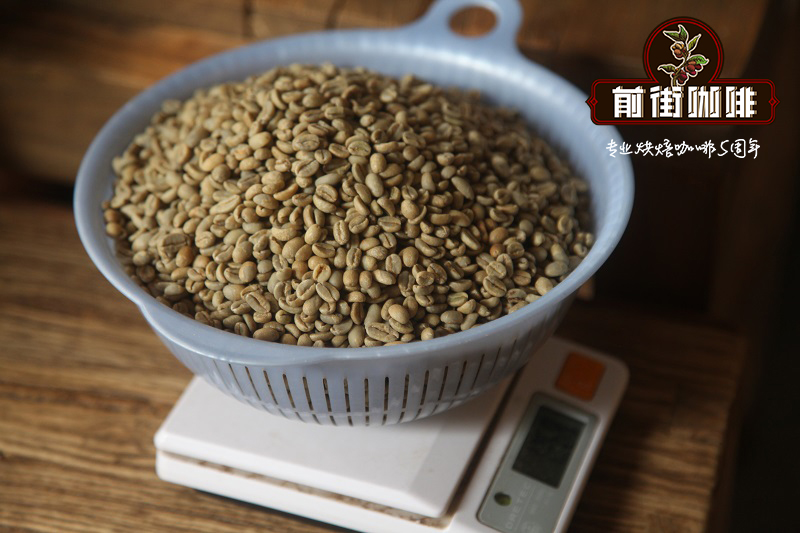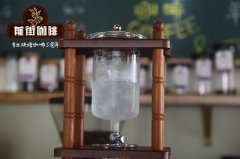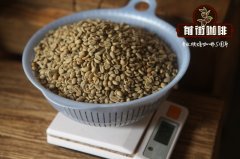What are the amazing flavors and characteristics of Indonesian Sulawesi Tonaga coffee? Wet planing Fassu

Professional coffee knowledge exchange more coffee bean information please follow the coffee workshop (Wechat official account cafe_style)
What are the amazing flavors and characteristics of Indonesian Sulawesi Tonaga coffee? Is the wet plane Farrawesi coffee good?
It is said that more than 300 years ago, in the great navigation era when colonialism prevailed, from the time when the Dutch spilled the first coffee seed on the land of Indonesia, it sprouted and spread its branches and leaves. Indonesia's coffee production has firmly ranked among the top five coffee exporters in the world. Due to the characteristics of many islands in the country, the identification boundary of coffee beans is also known as the island. There are Mantenin in Sumatra, Tonaga in Sulawesi, and even Java coffee named directly after Java.
Sulawesi Island, shaped like an inverted spoon, has a high mountain in the middle and is thousands of miles away.
On the island of Sulawesi under Indonesia's jurisdiction, the equatorial line crosses the northern peninsula and covers an area of 170,000 square kilometers, which is about the size of Taiwan, while the Tana Toraja plateau is located in the middle of the island, with steep mountains and thousand Michael peaks everywhere. It also belongs to volcanic geological soil, which is a suitable geographical condition for growing coffee.
The reason why a large proportion of Toraja coffee beans do not have a specific estate name like the boutique coffee beans in other places is that farmers have to transport the harvested coffee beans from the mountainous areas to the east to Sapan and west to Minanga or Kalosi, where they are sold to intermediaries or processing plants for subsequent processing and refinement, so these two areas have become important coffee distribution centers.
Celebes / fully washed Sulawesi (the old version of Celebes biz/) is a large island in eastern Indonesia. Sulawesi Island is the 11th largest island in the world by area, with a total area of 174600 square kilometers. It is located in eastern Indonesia and the southern Philippines. It has a very special shape, similar to a big K letter. There are four peninsulas in the middle of the island. The middle of the island is a precipitous mountain area, so there is little communication between the four peninsulas, and it is more convenient to connect by sea than by land. The administrative region of Sulawesi is divided into six provinces: West Sulawesi, North Sulawesi, Central Sulawesi, South Sulawesi, Southeast Sulawesi and Gundalo. The largest city is Wangkasek in the southwest, and Manado in the north is also a larger city. Compared with other Indonesian islands, 95% of the coffee trees on Sulawesi are Arabica, and the well-made coffee has the smell of grapefruit, berries, nuts and spices. On the other hand, it tastes fragrant and delicious, low acidity and thick. Sulawesi coffee production accounts for about 2% of Indonesia, and the varieties are old typeica, S795 and Jember-related varieties. Wet plucking is a traditional post-processing method, which will make raw coffee beans show the unique dark green of traditional Indonesian beans. However, many producers have switched to the Central American washing method, which helps to increase production and quality. The main producing areas are Mamasa, Tana Toraja, Gowa and Sinjal and Enrekang, among which Toraja is widely known.
In the post-processing stage, the alpine high-quality Tonaga coffee purchased by these two distribution centers, which is different from the commonly heard water washing or sun treatment, adopts the traditional wet stripping method known locally as "Giling Basah". In addition to the dark green visible in the appearance of raw beans, it shows low acidity, thick taste and soft and deep fruit flavor. It highlights what distinguishes Sulawesi Tonaga from Sumatra Mantenin.
Flavor: mild acidity with some ripe grapes, clean but solid taste, caramel sweetness in the back, lingering in the mouth.
Sulawesi is completely different from almost all other Indonesian beans.
Indonesian coffee, mainly in Sumatra, uses traditional wet planing to treat beans, while Toraga in Sulawesi is washed with water.
The vast majority of Indonesian beans in other places are Robusta, Ateng and Catimor, while Toraga grows Tibica or Tibica hybrids.
Sulawesi is so special for historical, geographical and cultural reasons, but the Japanese discovered the uniqueness of Sulawesi a long time ago. It was put into operation before World War II and created the world-famous Sulawesi coffee. Japan withdrew from Indonesia after its defeat, and Sulawesi coffee also disappeared from the world market.
In 1976, a joint venture between Japan and Indonesia established the Toarco Coffee Company in Sulawesi, introducing a Central and South American-style washing method to encourage local farmers to continue to grow Tibica. Over the past 40 years, everyone finally drank the unique Sulawesi again, with no soil flavor, no grass flavor, clean water to wash beans, on the contrary to the mainstream Mantenin. But the main consumers were still Japanese, until four or five years ago, three famous boutique coffee shops in the United States also began to launch Sulawesi, which was regarded as "the revival of Indonesian coffee."
Sulawesi Toraja ·Sapan-Minanga, Indonesia
Coffee producing areas: Indonesia / Sulawesi / Tonaga Plateau / Sapan-Minanga region
Planting altitude: 1300 Murray 2000 meters
Raw bean variety: Djember (SMUE 795)
Raw bean treatment: Wet-Hulled (local traditional wet peeling method)
Quality grading: .6 d/300gr, 17-18 screen
Important Notice :
前街咖啡 FrontStreet Coffee has moved to new addredd:
FrontStreet Coffee Address: 315,Donghua East Road,GuangZhou
Tel:020 38364473
- Prev

How to bake coffee beans by hand? Does the coffee beans roasted on the hand net taste bad? Hand-net baking coffee teaching
Professional coffee knowledge exchange more coffee bean information please follow the coffee workshop (Wechat official account cafe_style) how to manually roast coffee beans? Does the coffee beans roasted on the hand net taste bad? Teaching how to roast coffee on hand net? When it comes to fried peel, the layman always thinks it is very difficult. But as long as you can really grasp a few key points, it will not be very difficult. Here I will introduce you to the use of hands.
- Next

What is the impressive taste of coffee on the Indonesian island of Sulawesi? What kind of coffee is produced in Indonesia
Professional coffee knowledge exchange more coffee bean information please follow the coffee workshop (Wechat official account cafe_style) Indonesia Sulawesi what is the impressive taste of coffee? What coffee producing areas are there in Indonesia? Sulawesi, also known as celebes Celebes, is the 11th largest island in the world in terms of area. It is a blend of multi-ethnic cultures, celebes.
Related
- Detailed explanation of Jadeite planting Land in Panamanian Jadeite Manor introduction to the grading system of Jadeite competitive bidding, Red bid, Green bid and Rose Summer
- Story of Coffee planting in Brenka region of Costa Rica Stonehenge Manor anaerobic heavy honey treatment of flavor mouth
- What's on the barrel of Blue Mountain Coffee beans?
- Can American coffee also pull flowers? How to use hot American style to pull out a good-looking pattern?
- Can you make a cold extract with coffee beans? What is the right proportion for cold-extracted coffee formula?
- Indonesian PWN Gold Mandrine Coffee Origin Features Flavor How to Chong? Mandolin coffee is American.
- A brief introduction to the flavor characteristics of Brazilian yellow bourbon coffee beans
- What is the effect of different water quality on the flavor of cold-extracted coffee? What kind of water is best for brewing coffee?
- Why do you think of Rose Summer whenever you mention Panamanian coffee?
- Introduction to the characteristics of authentic blue mountain coffee bean producing areas? What is the CIB Coffee Authority in Jamaica?

